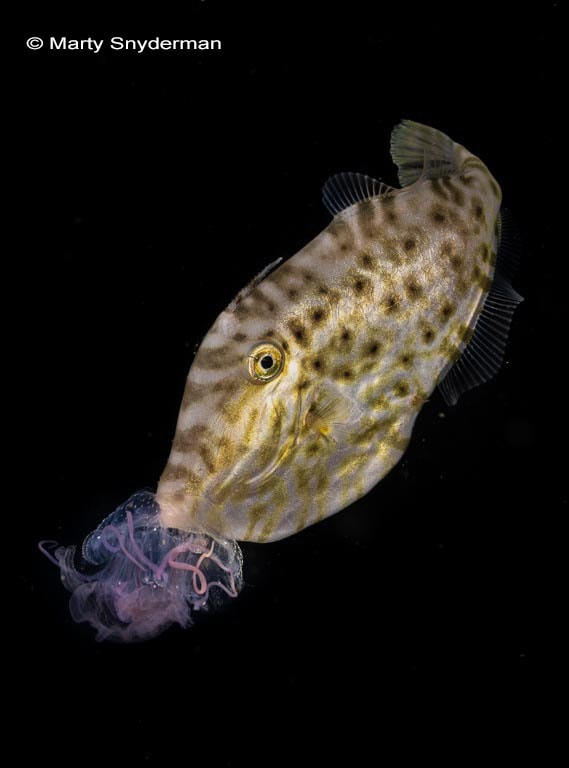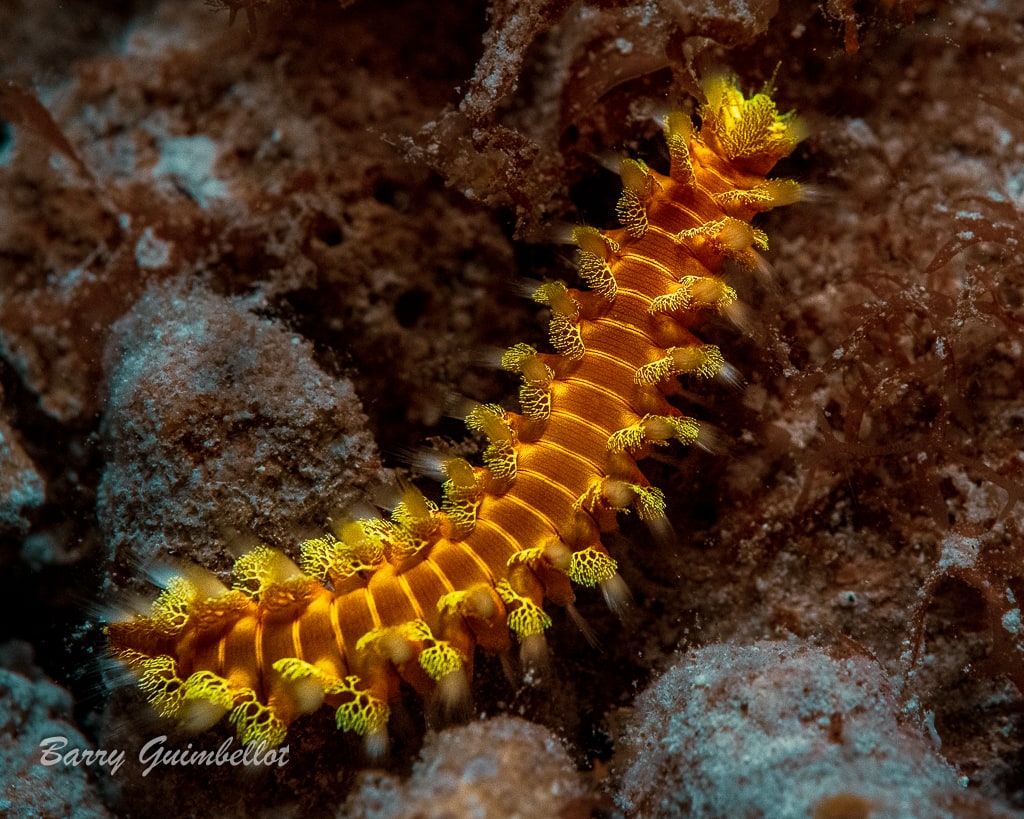Special Dives at Atlantis Resorts
Have you witnessed the greatest migration on Earth? Did you know it happens underwater?
Have you gone disco diving yet?
Join our specialty dives in the heart of the Coral Triangle!
Black Water Diving
If asked to name the greatest migrations on Earth, some may say that it is the annual journey taken by caribou, or the trek taken by wildebeest or Arctic terns.
But actually, the greatest migration on Earth happens not on land or in the air, but in the oceans. On a nightly basis trillions of marine animals (an estimated 10 billion tons), make the trek from the depths far below sport diving limits to the surface (or just below it). Many of these migrating creatures are forms of flea-sized zooplankton that attract an array of predators that range from larval fishes, salps, krill, and copepods to squids.

Larval filefish feeding on sea jelly , Photo by Marty Snyderman
To our guests in both Puerto Galera and Dumaguete, the nightly ascent translates into a new diving adventure known as blackwater diving.
Here’s how it works: just before sunset, the crew deploys a brightly lit surface float and array of powerful submerged lights. The lights attract the creatures that rise from the depths. After giving the lights time to draw in marine life, divers and dive guides enter the water to see what marvels from the deep can be seen and photographed.
Fluro Diving
If you have ever been night diving and witnessed bioluminescence, you are probably still telling your friends about your magical dive. Today, with the latest technology there is another amazing experience for you to have that involves marine life which glows under a black or ultraviolet (UV) light.
It is called fluorescent diving.

Bristle Worm by Barry Guimbellot
In this colorful experience, you will witness marine plants and animals shine in various colors, when you spot your special LED light on them.
It is like dancing in the 90’s!
Even when shining a blue light on the reef, some of the corals and anemones light up green, yellow, or even red. This is because the blue light is absorbed by some of the reef dwellers and is released as a new color. The light is not simply reflected. Light of new wavelengths is emitted.
The phenomenon is known as fluorescence. Not all marine plants or animals fluoresce, but those that do, have their own distinct color displays for you to see and enjoy.






